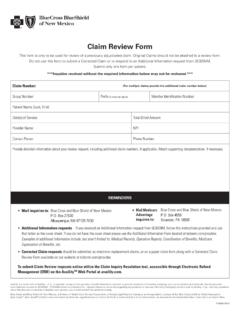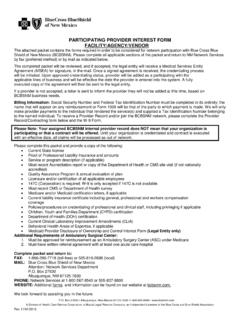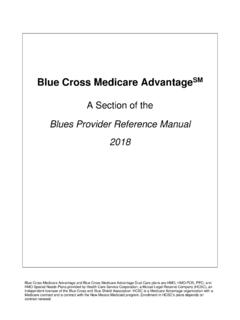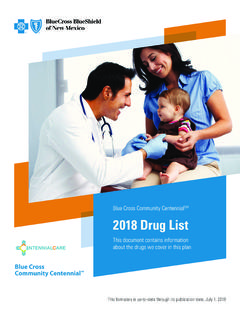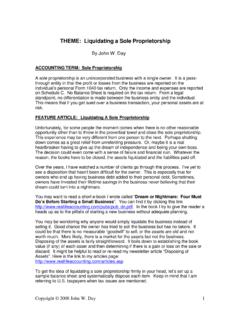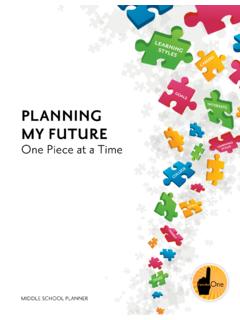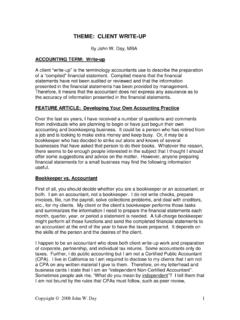Transcription of Health Fair Planing - Health Insurance New Mexico
1 Health fair planning Guide1 Put Wellness to WorkA Health fair is a good opportunity for you to engage your employees about theirhealth and wellness. Blue Cross and Blue Shield of New Mexico is pleased toprovide this comprehensive Health fair planning Guideto help you plan,implement and evaluate a Health fair . A Health fair may be a complex event encompassing many activities and learningopportunities, or it may be as simple as offering a Health screening or flu shot. Theneeds of your organization will dictate the Health fair you undertake. This guidemay be used as a starting point for any size Health fair . Don t be overwhelmed bythe amount of information. It has been created to cover the full gamut of potentialneeds for Health fair planning and are Health fairs important?A study commissioned by the Department of Health & Human Services concluded that, for manyAmericans, certain unhealthy individual behavior and lifestyle choices increase risk factors for healthproblems and influence the development and course of chronic conditions.
2 These conditions areultimately very costly to employers. Worksite-based programs that encourage individuals to adopthealthy habits and practices can help reduce the burden of illness and absenteeism and potentiallyreverse their effects on an employer s bottom line. A Health fair can be a major component for employers in an overall plan to facilitate change inemployees attitudes and Health practices. With employee wellness as the ultimate objective, healthfairs enable employers to reach a large number of individuals to: Focus on healthy life choices through activities, demonstrations and distribution of materials Increase awareness of Health risks by providing screenings and information Inform employees of local, state, and national Health services and resources Motivate participants to make positive Health behavior changes Provide immunizations2 planning is important for a successful Health fair . Allowing sufficient time for planning increases thelikelihood of: Securing the right mix of exhibitors and vendors Finding an optimal event location Hosting a well-organized eventBased on the complexity of the event, planning should begin up to six months before the Health fairdate.
3 This will allow time to implement the following steps:Step 1:Organizing a planning Committee ..3 Step 2:Setting Goals ..4 Step 3:Developing a Timeline ..5 Step 4:Establishing a Budget ..7 Step 5:Creating a Theme ..9 Step 6:Determining Activities ..10 Step 7:Selecting a Location ..12 Step 8:Managing Staffing Needs ..13 Step 9:Identifying and Securing Exhibitors and Vendors ..14 Step 10:Publicizing the Event ..15 planning for Success3 Committee chair:List committee membersA planning committee will provide leadership and coordination for the Health fair . The committee canvary in size, depending on how elaborate your Health fair is and the size of your company. For larger events, consider adding representatives from groups, such as: Community organizations: American Heart Association, American Cancer Society, March of Dimes Health professionals: physicians, optometrists, dietitians, nurses Health agencies: local Health department, hospitals, pharmacies Local colleges and universities Local businessesDuties of the committee may include the following.
4 Setting goals Developing a timeline Establishing and managing a budget Developing a theme Identifying the target audience and the best ways to reach the audience Deciding activities, Health screenings and information for participants Selecting a date Creating a schedule for the Health fair , including opening and closing times Determining whether food or refreshments will be offered at the event Identifying and coordinating contact of potential donors, sponsors, volunteers, vendors and exhibitors Assisting with management of the Health fair Establishing evaluation mechanisms and metricsHelpful HintsThe planningcommittee shouldinclude representationfrom key areas withinyour organization thatwill be participating inthe Health HintsIf you intend to providehealth screenings orimmunizations tohealth fair participants,include clinicalrepresentation on theplanning committee to help determineappropriateness ofscreenings and toensure proper healthprecautions arefollowed. This personcould be anoccupational healthnurse from yourcompany or a clinicianfrom the local 1: Organizing a planning Committee4 One of the first duties of the planning committee is to establish specific goals and objectives for thehealth fair .
5 What does your organization hope to achieve through the event? This will allow you toestablish guidelines for planning , promoting, implementing and evaluating the Health fair . Potential Health fair goals: Increase personal Health awareness Provide Health screenings and educational material Motivate behavioral changes Increase knowledge of employee benefits Increase knowledge of community resourcesStep 2: Setting GoalsHealth fair goals5 Health fair timeline and checklistStep 3: Developing a Timeline Obtain senior management approval Establish goals and objectives Select a planning committee chair and members Identify the target audience Select a theme Select a date and time Select and reserve the location Identify possible services, information, exhibitsand activities Prepare a budget Establish timelines Secure commitments from exhibitors, healthcare providers, vendors, etc. Send exhibitor/vendor invitation letter(included in toolkit) Secure volunteers, to help with: clerical duties,registration, evaluation form collection,setup/cleanup, hospitality and photography Select the Health screenings and services to be offered Reserve the rental equipment Reserve the audiovisual equipment Reserve tables and chairsHelpful HintsA timeline is anessential planning tooland will provide acomplete view ofwhen each activityshould be time to planwill result in a moreorganized event.
6 6 months before the Health fair3 to 6 months before the Health fair Order educational and promotional materials Plan and begin securing prizes, decorations,goodie bags, giveaways, etc. Reserve trash receptacles Customize promotional communications(posters, fliers, e-mails - included in the toolkit) Duplicate printed materials: registration andevaluation forms Seek confirmation from exhibitors, providers,vendors and volunteers Ask exhibitors to bring special equipment:extension cords, three-prong adaptors, Provide exhibitors with written confirmation of: Date of event Service or activity to be provided by theexhibitor Time to set up booth Time Health fair is open to public Map and directions to the Health fair General guidelines including security,check-in and parking Title for their booth signs3 months before the Health fair Meet with committee members to reviewprogress toward implementation of plans Publicize the event with fliers, posters, etc. Finalize booths, exhibits Prepare map for exhibitors and participants Send final information to exhibitors that includes: List of participating agencies and activities Parking information Security check-in instructions Name and phone number of contact forthe day of the Health fair Make a list of items still needing to be purchased Develop a Prepared for Anything Kit thatincludes: Office supplies Extension cords Tape Hammer, nails, pliers and screwdriver Batteries First-aid kit Trash bags Paper towels and tissues Camera and film for volunteer photographer Exhibitor/vendor contact list1 month before the Health fair6 Step 3: Developing a Timeline, continuedHelpful HintsWhen developing thetimeline, take into account: What is the size ofthe event?
7 Who will be invited? Are insurancecoverage or waiverforms required? Who needs toprovide approvals,such as seniorleadership and legalrepresentative? Final confirmation with all exhibitors Print map of exhibits and program Prepare exhibitors and volunteers nametags Prepare a list of where volunteers will beassigned the day of the Health fair Plan for 1-2 management personnel to beavailable to handle emergencies Finalize plan for the registration table and theregistration process Finalize plan for staffing, including commandcenter table Finalize plan for evaluation: distribution and collection1 week before the Health fair Set up the tables, booths, exhibits, chairs, etc. Set up the registration table: Sign-in/registration sheets with addressesand phone numbers Plenty of pens and pencils for participants Maps of exhibits and programs, ifapplicable Goodie bags for giveaways Assignment list for volunteers Label the command center table and equip withthe Prepared for Anything Kit Set up the evaluation area, including forms forexhibitors and participants, and the receptaclesfor form return Set up the food area, including refreshments for exhibitors Check to ensure sufficient electrical cords, outlets,audiovisual equipment, before the Health fair Be ready one hour before exhibitors are to arrive Greet and direct exhibitors to their assigned tables Direct and instruct the volunteers Collect registrations Check with exhibitors periodically to assess needs Collect evaluations (included in toolkit)
8 Clean up Estimate attendanceDay of the Health fair Send thank-you letters to exhibitors and volunteers Check with Health agencies doing thescreenings to make sure follow-up is done forall lab results Tabulate evaluation results Conduct committee debriefing meeting Report results to senior management andexhibitors, as appropriateFollow-up after the Health fair7 Health fair costs will vary based on the size of the event, the number of participants, and the activitiesprovided. Having a limited budget isn t a barrier to having a successful Health fair . There are manyresources available, both within your organization and in the community. You ll want to establish a budget and consider your original Health fair goals as a basis for determiningwhere to spend the available budget dollars. Budget details Health screening and other vendor costs Thank-you gifts for vendors Decorations Mailings, including promotional and follow-up Publicity and promotion costs Parking Permits and Insurance requirements Giveaways for participants Printing Refreshments for participants, volunteers, and people in exhibitor and vendor booths Rental of tables, chairs, audiovisual equipment or other equipmentStep 4: Establishing a BudgetHelpful Hints Identify the individualresponsible forwriting and signingchecks.
9 Determine howdeposits forequipment, tables,etc. will be handled. Set policies forhandling cash andreimbursements. Specify the deadlinefor submission ofbills after the fair budget planning formDisplaysDecorations$_____Banners$___ __Barriers/privacy curtains$_____Display boards/posters$_____Educational materials$_____Extension cords$_____Garbage bags/cans$_____Office supplies$_____Surge protectors$_____Tablecloths$_____Subtota l$_____Promotional/publicitymaterialsBag s$_____Banners$_____Prizes$_____Fliers$_ ____Giveaways$_____Subtotal$_____Volunte ersNametags$_____Parking$_____Refreshmen ts$_____T-shirts$_____Subtotal$_____Vend or costsHealth screenings$_____Insurance/waivers$_____V endor parking$_____Honorariums/travel costs$_____Specialized supplies$_____Subtotal$_____ EquipmentTables/chairs$_____Other equipment rental$_____Subtotal$_____PaperworkCorre spondence/postage$_____Evaluations$_____ Printing$_____Invitations$_____Registrat ion forms$_____Screening forms$_____Thank-you notes$_____Subtotal$_____Step 4.
10 Establishing a Budget, continuedDisplays$_____Materials$_____Vo lunteers$_____Vendor costs$_____Equipment$_____Paperwork$____ _Total cost$_____9 Creating a theme can heighten interest and help with promotions. Selecting a theme Evaluate past themed events your company may have held or your committee members may have attended Survey employees Assess the Health needs and desires of the target audience (an employee interests and needssurvey is included in the toolkit). Utilize survey results to plan the theme. Investigate local resources Are Health care professionals or community organizations available that may provide expertise on acertain theme? What resources are available in your area? Take into account colleges and universities, volunteer organizations, government agencies such as the police and fire departments, and theparks and recreation department. Also consider hospitals, fitness centers, pharmacies andgrocery stores. These community organizations may provide staff, screenings, refreshments orpromotional material.
